Welcome to the beautiful region of Tolima, Colombia! Here you will find a wide variety of bird species, ranging from the majestic Andean Condor to the colorful Scarlet-rumped Cacique.
Tolima is home to over 400 species of birds, representing a large variety of families, including hummingbirds, woodpeckers, raptors, and many more. Birders from around the world flock to Tolima to observe these incredible creatures in their natural habitats.
With its diverse terrain, from the high Andes mountain range to the lush tropical rainforest, Tolima provides an excellent opportunity to observe a variety of bird species.
From the vibrant songbirds of the cloud forests to the majestic raptors of the high Andes, Tolima has something for everyone. So come explore the birds of Tolima and experience nature in its most beautiful form.
1. Tolima Dove
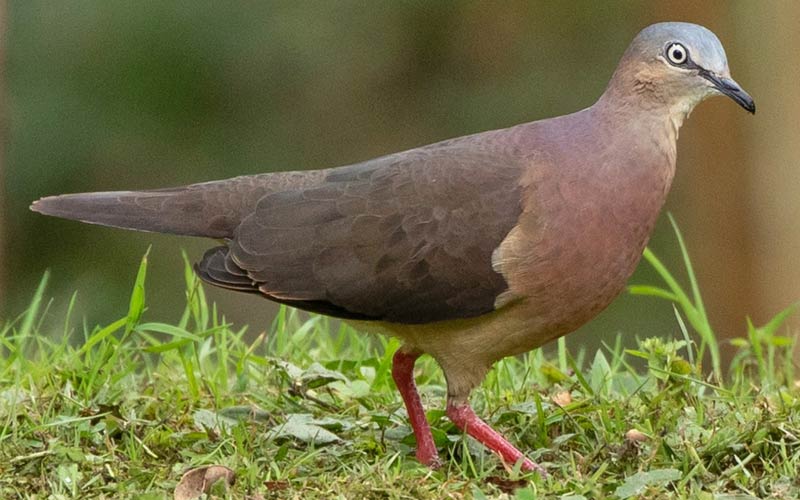
The Tolima dove is a species of bird that is found only in Colombia. It belongs to the Columbidae family, which is a group of birds that includes all species of doves and pigeons.
The Tolima dove is an endemic species, meaning it is found only in Colombia and nowhere else in the world. Its range is restricted to the departments of Tolima, Cundinamarca, and Meta.
It is typically found in subtropical and tropical moist montane forests, as well as in heavily degraded former forests. The Tolima dove has a grey-brown head, neck, and upperparts, with the underparts being a lighter grey.
It has a black patch on its throat and a white patch on its forehead. Its tail feathers are black and white, and its bill is black.
The average length of the Tolima dove is around 6.7 inches, and its wingspan is around 11 inches. The Tolima dove is an omnivore, primarily feeding on fruits, seeds, and insects.
It usually occurs in pairs or small groups and is known to forage in the understory of the forest and occasionally on the forest floor.
Its main predators are birds of prey and snakes. The population of the Tolima dove is considered to be stable, although there have been some localized declines due to habitat loss and deforestation.
It is listed as a species of least concern by the International Union for Conservation of Nature (IUCN).
| Kingdom | Animalia |
| Phylum | Chordata |
| Class | Aves |
| Order | Columbiformes |
| Family | Columbidae |
| Genus | Leptotila |
| Species | L. conoveri |
2. Yellow-headed Brushfinch
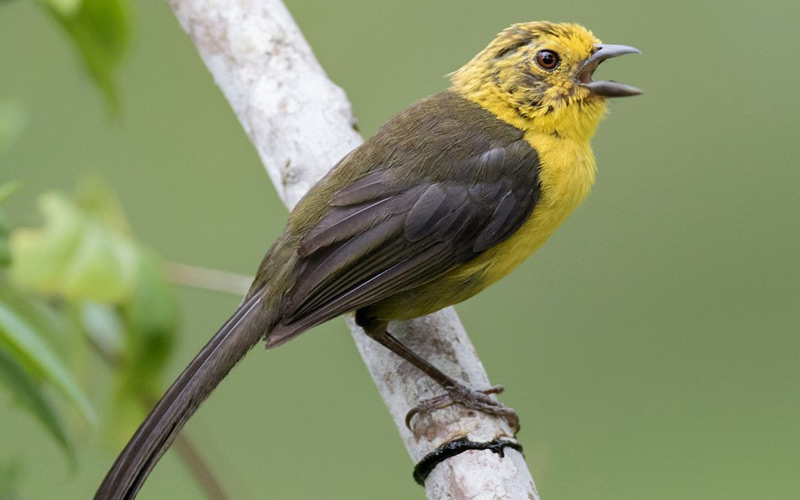
Source: ebird.org
The Yellow-headed Brushfinch is a species of bird that is classified as Near Threatened. It belongs to the family Passerellidae, which is commonly known as the American sparrow family. This species is only found in Colombia and is not found anywhere else.
The common name of the bird is derived from its scientific name which is Atlapetes flaviceps. The word Atlapetes refers to the brushfinch genus while flaviceps means “yellow-headed”. Therefore, the common name of the bird is a semi-literal translation of its scientific name.
| Kingdom | Animalia |
| Phylum | Chordata |
| Class | Aves |
| Order | Passeriformes |
| Family | Passerellidae |
| Genus | Atlapetes |
| Species | A. flaviceps |
3. Fuertes’s Parrot
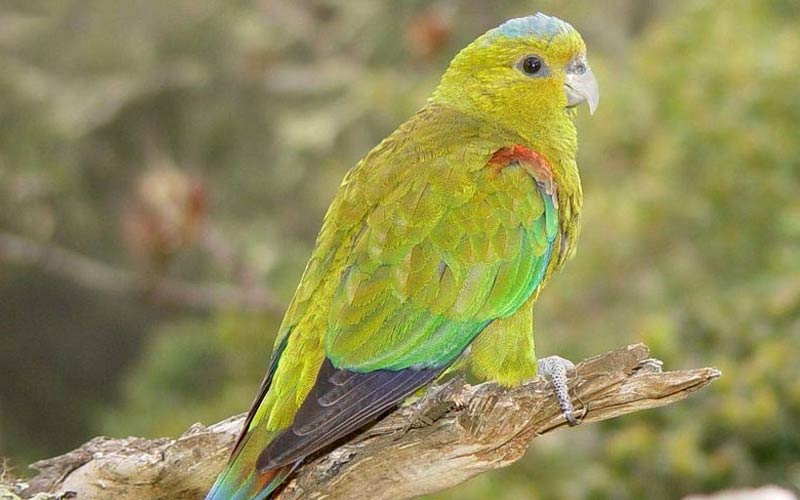
Source: oiseaux.net
The Fuertes’s parrot is a rare and threatened species of bird that is part of the parrot family, known as Psittacidae. It is classified into a subfamily of its own, Arinae, which contains birds found in both the African and New World regions.
This particular species is only found in the country of Colombia and is also known as the indigo-winged parrot due to its distinctive markings.
The Fuertes parrot has a vivid blue head and back, with a yellow-green belly and wings that have a distinctive dark blue patch near the tips. The bird is about 12 centimeters in length and is generally quite active during the day.
It is omnivorous, feeding on a variety of fruits, nuts, and small invertebrates.
While the Fuertes parrot is not yet listed as Critically Endangered, its population is in decline due to several factors, including the destruction of its primary habitat, the humid montane forests in Colombia.
Other threats include illegal trapping and trading of the birds, as well as competition with other species for food and nesting sites.
Conservation efforts are underway to protect this beautiful species from extinction, but much more work needs to be done to ensure its future survival.
| Kingdom | Animalia |
| Phylum | Chordata |
| Class | Aves |
| Order | Psittaciformes |
| Family | Psittacidae |
| Genus | Hapalopsittaca |
| Species | H. fuertesi |
4. Apical Flycatcher
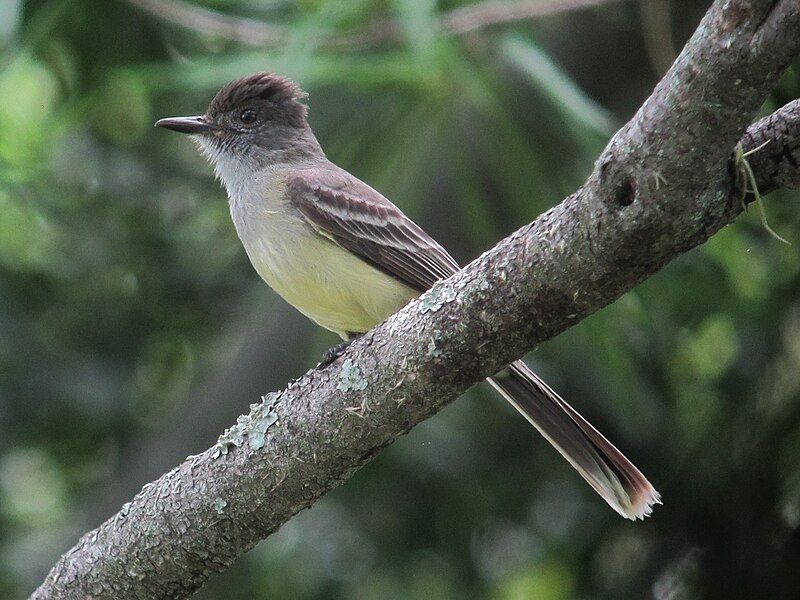
The Apical Flycatcher is a species of bird found in the family Tyrannidae, which are known as tyrant flycatchers.
This species is found only in Colombia and can be found living in a variety of habitats, including subtropical or tropical dry forests, arid and semi-arid open areas, and even agricultural land.
The Apical Flycatcher is a small bird, typically measuring between 15 and 17 cm in length and has a distinct yellow-orange forehead with a black line running along the top. Its wings and tail are mostly brown in color, with white spots on the wings and tail tip.
The Apical Flycatcher is a territorial bird that lives in pairs, with the male and female defending their territory from other birds and predators. They feed mostly on insects, such as flies, beetles, and caterpillars, and their diet varies with the season.
They build their nests in low trees or shrubs and lay 2 to 4 eggs per clutch. The Apical Flycatcher is an important species in Colombia, as it helps to control insect populations in its natural habitats.
| Kingdom | Animalia |
| Phylum | Chordata |
| Class | Aves |
| Order | Passeriformes |
| Family | Tyrannidae |
| Genus | Myiarchus |
| Species | M. apicalis |
5. Indigo-capped Hummingbird
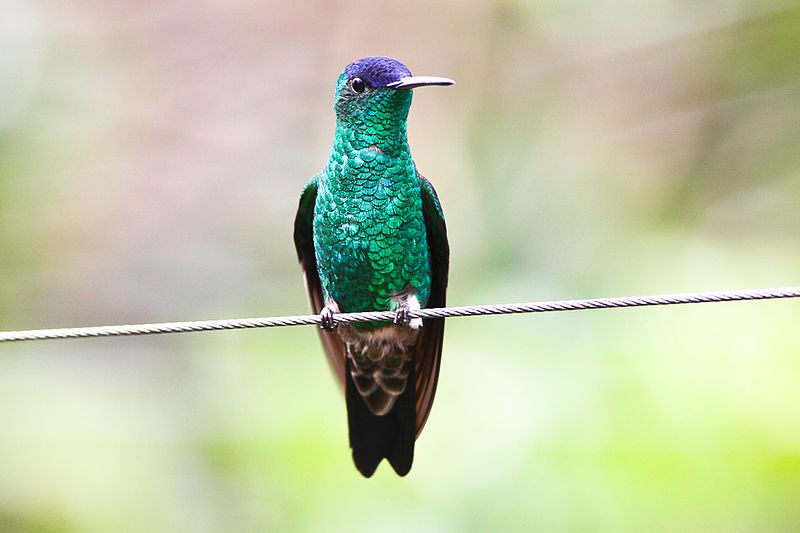
The indigo-capped hummingbird is a unique species of hummingbird native to Colombia. It is part of the Trochilini tribe, which is a subfamily of the Trochilinae family.
This species of hummingbird is known as the “emeralds” because of the stunning indigo-colored crown that adorns its head. This coloration is quite striking when the bird is in flight, and is made even more vibrant by its glossy green back and wings.
It has a long bill and a forked tail, both of which are distinctive features of this species. The indigo-capped hummingbird is also quite small, measuring only around 9cm in length from beak to tail.
It is an endangered species, as its natural habitat is being encroached upon by human activities. In order to protect this species, it is important to conserve its natural habitat and ensure that its population is kept safe.
| Kingdom | Animalia |
| Phylum | Chordata |
| Class | Aves |
| Clade | Strisores |
| Order | Apodiformes |
| Family | Trochilidae |
| Genus | Saucerottia |
| Species | S. cyanifrons |
6. Velvet-fronted Euphonia
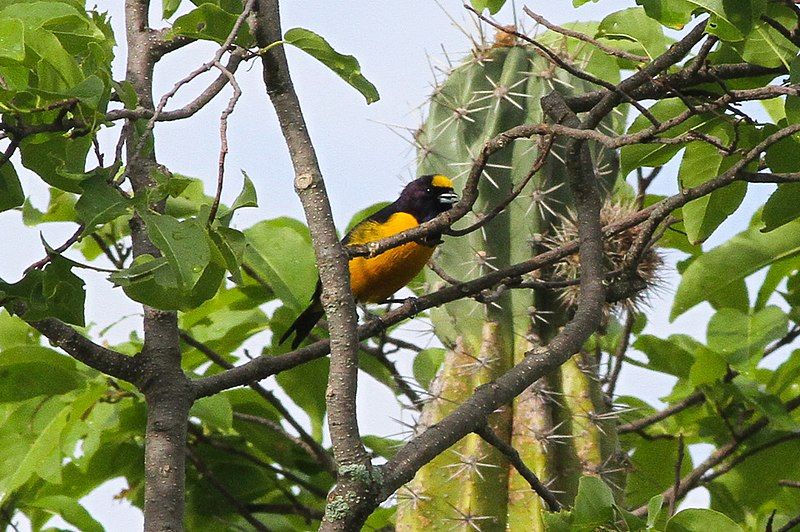
The velvet-fronted Euphonia is an interesting species of bird, belonging to the family Fringillidae. It was recently reclassified from the Thraupidae family and is found only in Colombia. It is a tropical bird, prefers dry forests and even degraded former forests.
This type of habitat is ideal for the velvet-fronted euphonia, as it gives it plenty of places to forage for food and make it home.
The bird’s diet consists mainly of fruits and seeds, which it finds in the forest. The velvet-fronted euphonia is a small species of bird, with a rounded body and a short tail. Its most distinct feature is its bright yellow head, which can be seen from a distance.
It also has a distinctive pattern of black and white stripes on its wings, as well as a black patch on its throat.
Its bright colors can help it blend in with its surroundings, making it difficult for predators to spot. The velvet-fronted Euphonia is an important species of bird, as it plays a major role in the ecosystems of its natural habitats.
It helps to spread seeds, aiding in the regeneration of forests, and it also pollinates flowers and other plants.
These activities help to ensure the health of the local environment. Overall, the velvet-fronted euphonia is a fascinating species of bird, which can only be found in Colombia.
It’s unique characteristics and important role in its natural habitats make it an important part of the local ecosystem.
| Kingdom | Animalia |
| Phylum | Chordata |
| Class | Aves |
| Order | Passeriformes |
| Family | Fringillidae |
| Genus | Euphonia |
| Species | E. concinna |
7. Barred Puffbird
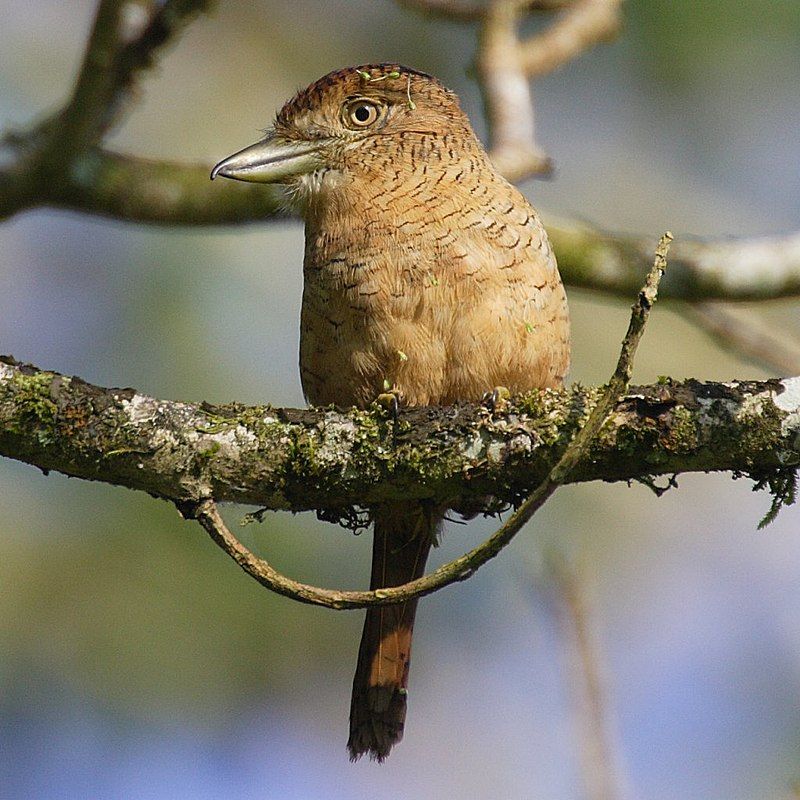
The barred puffbird is a species of bird belonging to the family Bucconidae. This family of birds includes puffbirds, nunlets, and sunbirds, which are all found in Central and South America. The barred puffbird is native to Panama, Colombia, and Ecuador.
It is a medium-sized bird, with black, white, and gray feathers and a white throat. Its wings are barred in black and gray and its tail is tipped with white. The barred puffbird is usually seen alone or in pairs, perched on a tree.
It feeds mainly on insects, which it catches in mid-air. Its call is a loud, low-pitched “wurp”. It also produces a low, raspy “wurp” when alarmed. This species of bird plays an important role in its habitat by controlling the insect population.
It also contributes to the local ecosystem by dispersing seeds from the fruits it eats. The barred puffbird is a fascinating species that deserves our protection and appreciation.
| Kingdom | Animalia |
| Phylum | Chordata |
| Class | Aves |
| Order | Piciformes |
| Family | Bucconidae |
| Genus | Nystalus |
| Species | N. radiatus |
Conclusion
The bird species of Tolima are very diverse and represent a unique and important part of the region’s natural heritage.
The bird-watching opportunities in Tolima are some of the best in the world, due to the large number of endemic and migrating species that visit the region each year.
The local conservation efforts are making a difference in the conservation of the birds of Tolima, and the region’s bird populations are in a better state than ever before.
The people of Tolima should be proud of the amazing bird diversity in their region and should continue to work towards protecting this natural heritage.